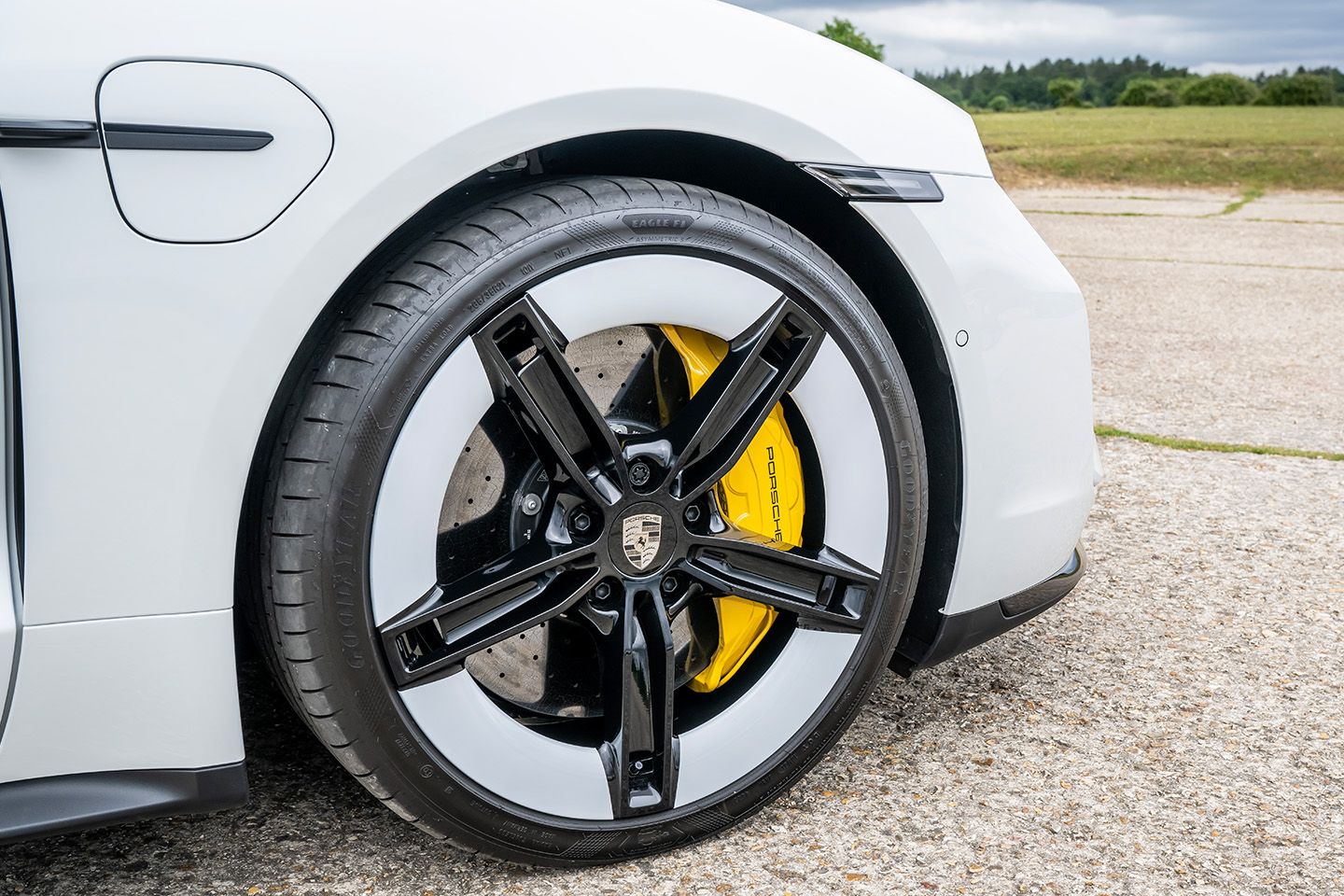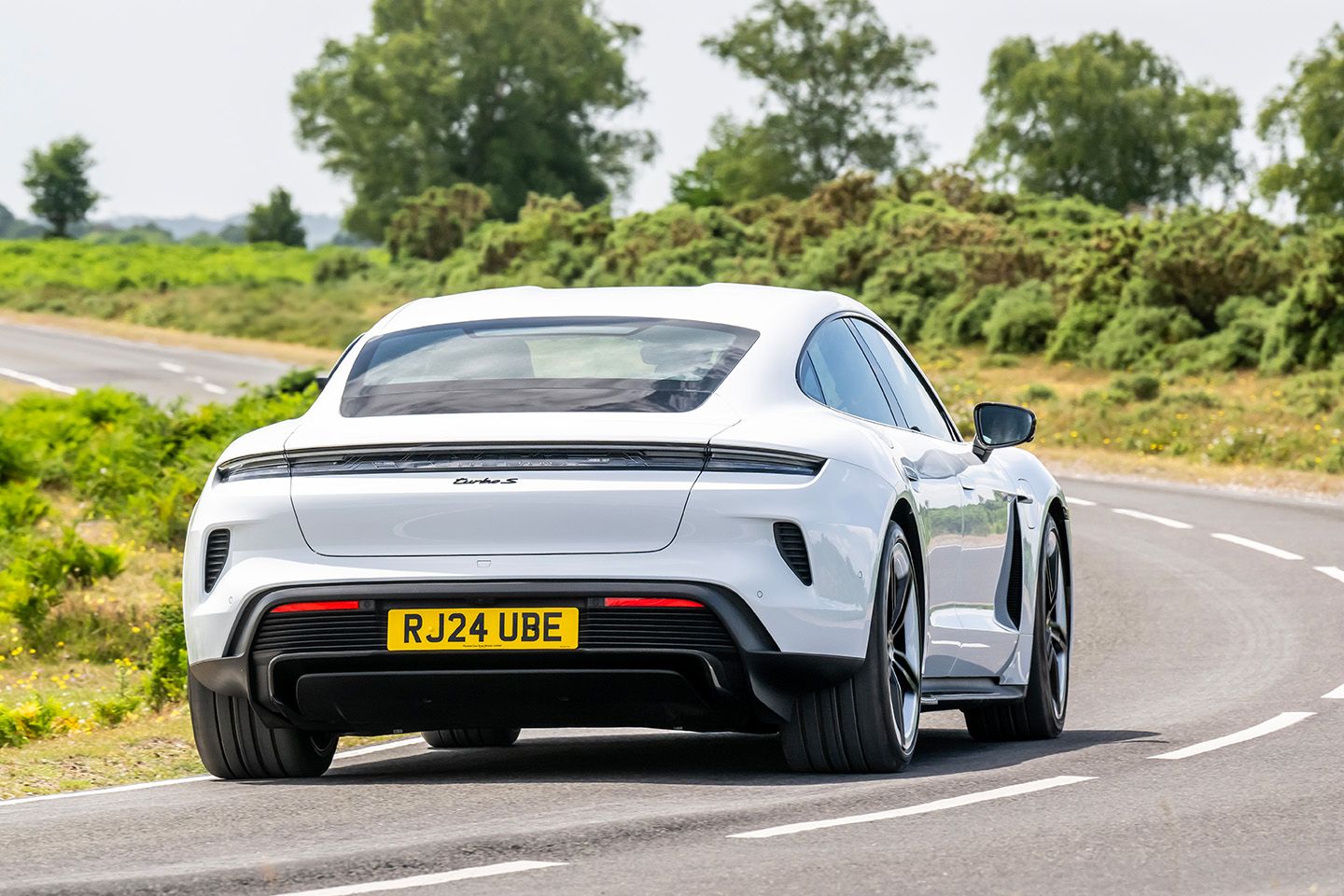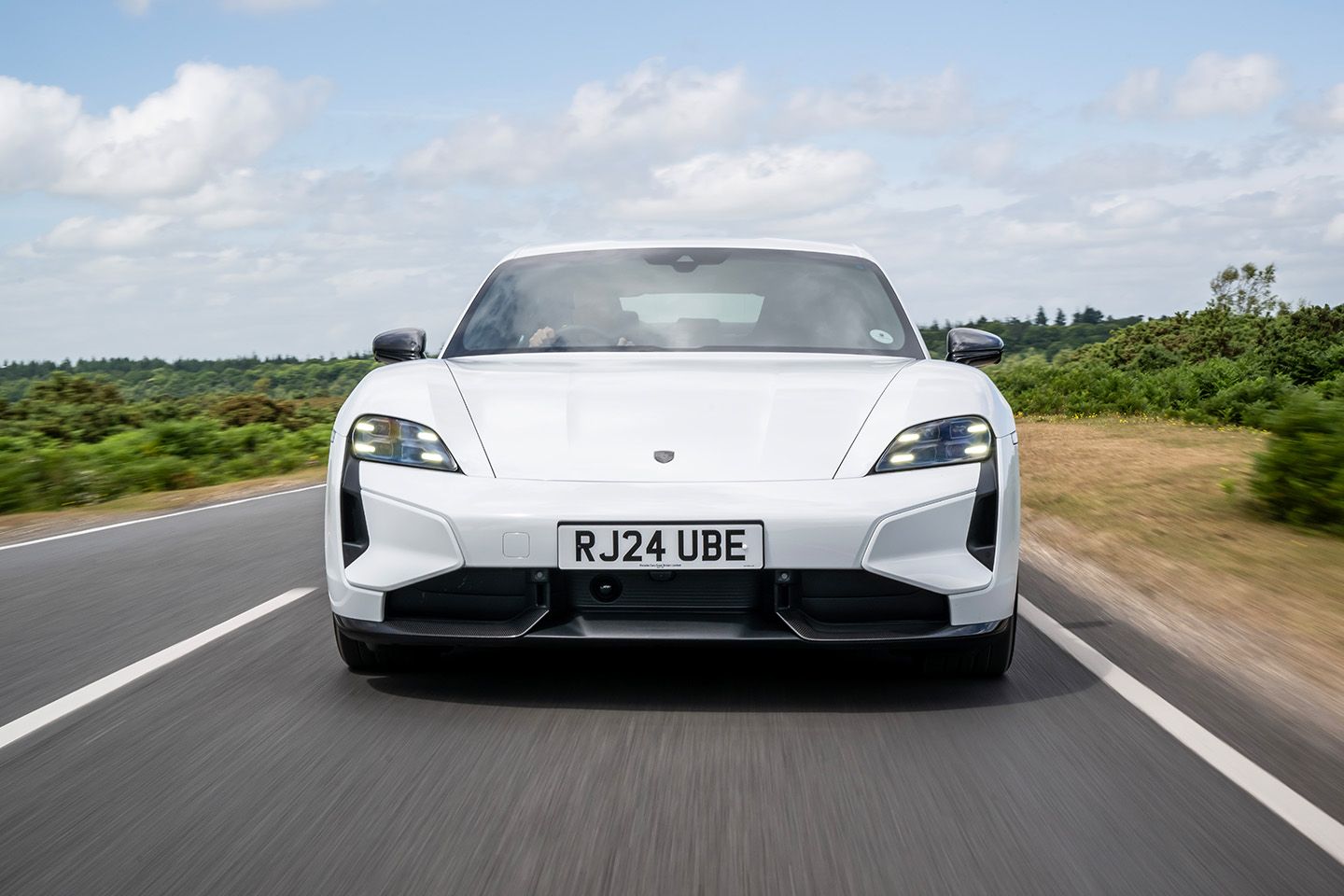2024 Porsche Taycan Turbo S | UK Review
Little separated the old Taycan Turbo flagships, but that's no longer the case. Here are 952 reasons why

Since the dawn of time, faster cars have just been better than slower ones. See pretty much any sports car, hot hatch, super saloon or anything vaguely performance-oriented as proof. However, ever since the electric car arrived on the scene, it’s typically been a case of the complete opposite. EVs can be face-meltingly fast, especially when there’s more than one motor at play, but the near-instant torque offered up by an electric powertrain means even the more range-focused models feel brisk. Not to mention the dynamic and ride quirks that have hampered several twin-motor EVs of late (cough, Polestar 4, cough).
The latter was never a major issue with the original Porsche Taycan, but the consensus has been that the 4S, with ample power and the biggest battery optionally available, was arguably the pick of the lineup. The Turbo models traded too much range for performance, while the Turbo S was only quicker than the non-S model when overboost was activated.
That all changes for the 2024 overhaul, however. Mike’s already gone through all the facelift’s tweaks and updates in fine detail in an earlier test, but the headline features are bigger batteries (82.3kWh for entry-level models and 97kWh at the higher end) and a significant improvement in range. Under WLTP, the rear-drive Taycan with the Performance Plus battery equipped offers up to 421 miles of range, a huge 120-mile leap over the equivalent spec on the old car, while the Turbo S, which could previously only muster 258 miles on a single charge, can now run for up to 391 miles. You’re still sacrificing range for performance by going down the Turbo route, but there’s just 30 miles in it between the rangiest and most profligate models.


Crucially, the Turbo S is now comfortably the most powerful Taycan in the range. By a margin. All models get a new, punchier motor at the rear, which on the Turbo S helps contribute to a 150hp jump over the outgoing model. That means 775hp in most conditions, a good 68hp over the regular Turbo, while pressing the new Push-to-Pass button ups that figure to 870hp for a ten-second burst. But wait, there’s more. Activate launch control with Push-to-Pass and you’ll unlock the full 952hp, which’ll swiftly fire you from 0-62mph in 2.4 seconds, or 0-124mph in a Bugatti Veyron-rivalling 7.7 seconds. Wowsers.
Those sort of numbers are, frankly, almost impossible to achieve on a public road, let alone regularly. Yet a few miles into the test route around the roads of Chichester (in the opposite direction to the Goodwood Festival of Speed traffic, for now), the opportunity to sample everything the Turbo S had to give presented itself. Sat stationary with the driver mode dial in Sport Plus and the Overboost button pressed, I pin the throttle to the floor and quickly withdraw my left leg from the brake. The Turbo S accelerates with such ferocity that it’s hard for your brain to compute, not least because it feels as though you’ve just taken a kick to the face by an MMA fighter. It’s a well rehearsed party trick in the EV world, and one that few will engage with after a few tries, but that doesn’t make it any less satisfying - even if it leaves you with a headache.
Even outside of the showboaty modes, the Turbo S is noticeably quicker than before. There’s a good amount of travel in the accelerator, which makes managing all that power nice and easy, and with the drive mode set to Normal you’ll only notice the extra grunt the Turbo S has to offer beyond 50 per cent(ish) throttle. Again, there are plenty of EVs that are just as fast as the Taycan, but couple that speed with Porsche’s handling excellence and probably the most communicative steering in a mass-produced EV, and you’ve got easily one of the most engaging battery-powered performance cars on the planet.


Another headline feature on the new Taycan is addition of Porsche Active Ride Control suspension. The electro-hydraulic system replaces conventional anti-roll dampers, and features Active Tilt and Lean functions that keep the platform stable in the twisty stuff by syphoning high-pressure fluid to all four corners. It’s mighty impressive on rutty West Sussex roads, soaking up some really quite nasty surfaces without letting nasty vibrations intrude into the cabin. More impressive is its ability to veil the 2,295kg, roll-inducing kerb weight. A strong suit of its predecessor too, but the new Taycan’s front axle feels a touch more responsive with Active Ride dialling back body lean on corner entry. It’s a pricey optional extra at £6,291, but given we live in a country with some truly diabolical roads it does feel like a must-have. That said, the now standard air suspension on all models should provide much of the Active Ride’s comfort — albeit without the physics-defying mastery in the corners.
Admittedly, the drive wasn’t long enough to put the vastly improved range claims to the test. That said, after a short high speed cruise, a bit of spirited driving on some brilliant country roads and a good ten minutes stuck in Goodwood traffic, the Turbo S returned an efficiency of 4.4mi/kWh. Take that with a sizeable pinch of salt, as I’d need to cover more distance to get a proper reading, but even if that were to dip to the low fours it’d be a strong showing for a super EV knocking on the door of 1,000hp.
As unnatural as it sounds to mention ‘efficiency’ and a Porsche Turbo S in the same sentence, it shows just how much of a step on this new Taycan is. Aside from the cabin, which has been carried over largely untouched, every other aspect of the Taycan feels like a step on from the original. It still feels tricky recommending the £161,400 range-topper (Turbo GT aside) over the more rangy models, and logic dictates the 554hp 4S remains the most sensible choice at a £65,500 discount, but there’s at least an incentive to pay extra when choosing between the two Turbos. All of the models are an improvement on what came before, though the fact old Taycans are going for peanuts these days - like this 2021 Turbo S at £63,450 - does make going down the used route all the more tempting...
SPECIFICATION | PORSCHE TAYCAN TURBO S
Engine: Two permanent magnet synchronous electric motors (97kWh lithium-ion battery)
Transmission: two-speed rear transmission, single-speed front, all-wheel drive
Power (hp): 775 (952 Push-to-Pass)
Torque (lb ft): 811
0-62mph: 2.4 seconds
Top speed: 162mph
Weight: 2,295kg
MPG: N/A
CO2: 0g/km
Price: £161,400 (Price as tested, £173,120; Active Ride Control £6,291, surround view with active parking support £1,088, soft close doors £546, windscreen with grey tint £89, model designation painted in black £185, side window trims in black £269, exterior upper mirror trims in carbon £1, 158, two-tone interior leather £371, 4+1 seats £371, wheels painted in exterior colour £926, 21-inch Mission E design wheels £426)








In other words very impressive.
A 2.5ton, 900bhp, Lotus Eletre averaging 2.2 miles per kWh (poor EV efficiency) is still more energy efficient than the best diesel or petrol car.
A 2.5ton, 900bhp, Lotus Eletre averaging 2.2 miles per kWh (poor EV efficiency) is still more energy efficient than the best diesel or petrol car.
That's the awkward thing about these cars. mooooOOOOOOO as they accelerate. WTF.

Private buyers can't afford the loss, companies only imho.
TX.

Private buyers can't afford the loss, companies only imho.
TX.
If they can make them reliable this time, they would be a great used buy at under £70k and 18 month old.
In other words very impressive.
A 2.5ton, 900bhp, Lotus Eletre averaging 2.2 miles per kWh (poor EV efficiency) is still more energy efficient than the best diesel or petrol car.
In other words very impressive.
A 2.5ton, 900bhp, Lotus Eletre averaging 2.2 miles per kWh (poor EV efficiency) is still more energy efficient than the best diesel or petrol car.
Gassing Station | General Gassing | Top of Page | What's New | My Stuff






